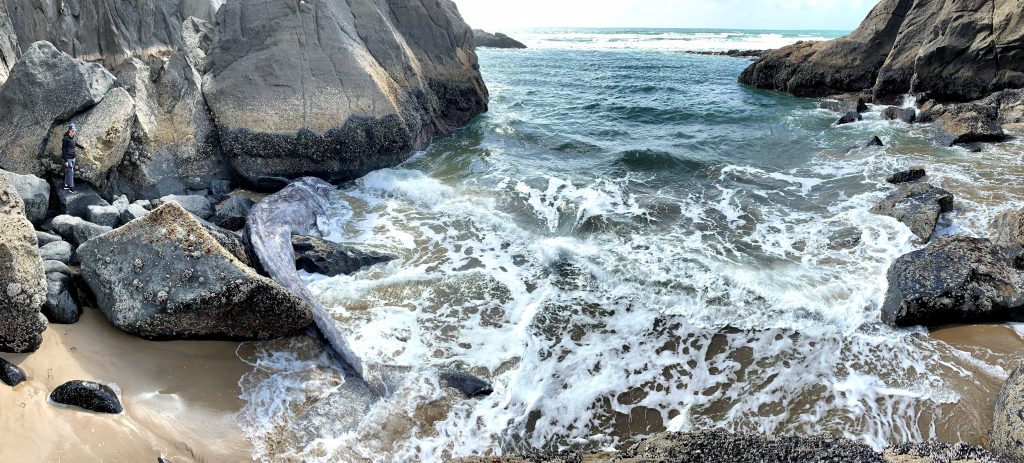 Gray whale stranded on Westwind beach April 27, 2019. View more photos.
Gray whale stranded on Westwind beach April 27, 2019. View more photos.
Thanks for your interest and comments on our Facebook post about the stranded Gray whale just south of Three Rocks Beach (in front of Westwind).
There were a number of great questions and comments. Yesterday Jim Rice from the Hatfield Marine Science Center visited the whale carcass. Here is further information and answers to some of the questions.
How big was the whale?
The total length of the whale was measured at 32’2″.
How old?
Based on the size of the whale, our best guess that the whale was a yearling/juvenile.
How did the whale die?
The whale appeared emaciated and was likely malnourished from underfeeding in Bering Sea/Alaska waters. There have been a series of strandings along the Northwest coast that indicative of starvation.
The main population of Eastern Pacific Gray Whales migrate between the food-rich Bering Sea/Alaska waters in summer and the shallow and warm lagoons along southern Baja peninsula in winter. A smaller population migrates only between Pacific Northwest region (Washington/Oregon) and Baja. Baja is where whales breed and mothers give birth to newborns. All grays must eat enough in summer feeding waters in the north to sustain through migration south and back. For complex reasons (including warming in the arctic), some seasons have dramatically lower yields of krill and other food for the whales, leading to starvation and early death for some whales.
What will happen to the body?
For now, the whale will remain undisturbed on the beach. Westwind staff is working with local experts to determine next steps on any additional actions, and how we can use this unfortunate circumstance as a way to best educate the public and our guests on marine mammal education.
How can I help if I find a stranded marine mammal?
To report a dead, injured or stranded marine mammal, please call: 1-866-767-6114. Visit the Oregon Marine Mammal Stranding Network to learn more about ways to help.
